I’ve been looking forward to this one!
More than 2,000 female dancers called apsaras grace Angkor Wat’s walls. So during this last trip to Cambodia, I took pictures of so many that smoke was coming from my camera. Not just because I enjoy looking at them more than the hulking men in the last post. They have subtle meanings that take you into ideas behind Angkor Wat. They also make very cool comparisons with Western culture.
Apsaras emerged from the Cosmic Ocean Of Milk. They were among the creatures who came from it as the gods and demons were churning it by having a tug-o-war and using a giant serpent as a rope. But the apsaras are sure a lot more graceful looking than those characters.
Almost every one is unique. Each has her own combo of outfit, hairdo and gestures.
And every inch exudes celestial elegance. Many twirl their hair with thin curving fingers that are as dainty as the locks they play with.
But why did king Suryvarman II have his craftspeople put so much effort into carving them in his royal temple. Was he a really horny guy who expected to need 2,000 consorts in paradise?
If that was a reason, it wasn’t the only one. Dance was a key art form in ancient Khmer times. Many of the largest Khmer temples have halls that were used for dancing. Scenes from the Ramayana were probably enacted at Angkor Wat. This epic has been one of the most widely danced theme all over Southeast Asia. Its hero, Rama, was an incarnation of Vishnu. Angkor Wat honors Vishnu as well as Suryavarman–the king assumed that their souls were linked.
Perhaps dancers enacted scenes from the Ramayana at Angkor Wat to honor both.
But the belief that apsaras came from the churning of the ocean of milk shows that dance was honored in other fields than Vishnu worship. Because apsaras came from the cosmic ocean, they’re directly associated with the creation of the whole universe–they’re at the source of things.
A recent post on Angkor Wat details the prevalence of serpents at this temple. They represent cosmic energies. So do apsaras, but they’re more refined. In the above photo, the celestial heart-throb seems to merge with the background. Her slight lean and elaborate crown blend with the flowery background so that they comprise a single field of energy. But it’s a very delicate energy. It’s very different from the dense foliage on Preah Ko’s lintels and the rearing serpent heads at Angkor Wat.
Apsaras are cosmic energies that are spiritualized.
In contrast with the last post, on Western art, this energy isn’t seen in terms of humans, or the community. It comes directly from creation, and it pervades the whole universe. The paths that this energy flows in aren’t primarily between people in a three dimensional space. They’re more primary and universal–they’re closer to the source of creation, which preceeded individual life-forms. So we’re in a different world than the one that Renaissance Italy was expressing.
This view of dance as an enactment of the patterns of creation was expressed in India, in Bharatnatyam. This is a dance form which personifies Hindu gods, and dancers have performed in temples since ancient times. This art spread through Southeast Asia as Indians migrated there, and it’s a key root of Cambodian dance. India’s cultural landscapes and Southeast Asia intersected in many ways. Like the West, they became one of the planet’s most fascinating crossroads. We’ll keep exploring them over the next few posts.


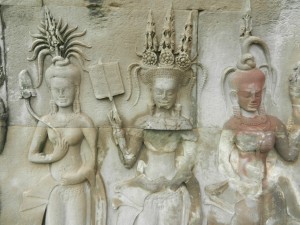
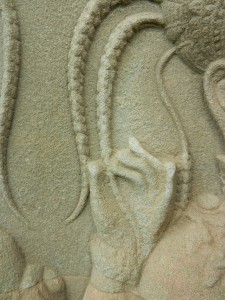
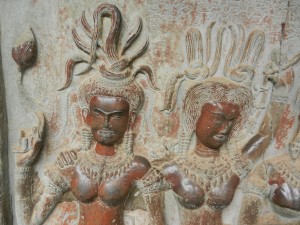
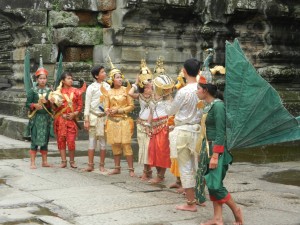
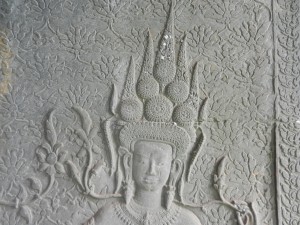
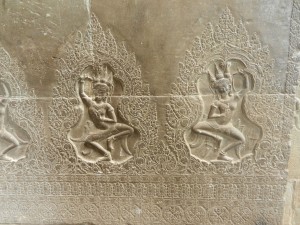
{ 2 comments }
Wow!
Your writing is some of the most delightful I’ve ever read.
I only wish I myself wrote e so well as you have done.
Thank you for sharing yourself this way.
Thanks, Dennis, but I think the dancers get the credit for the inspiration:-)
Comments on this entry are closed.